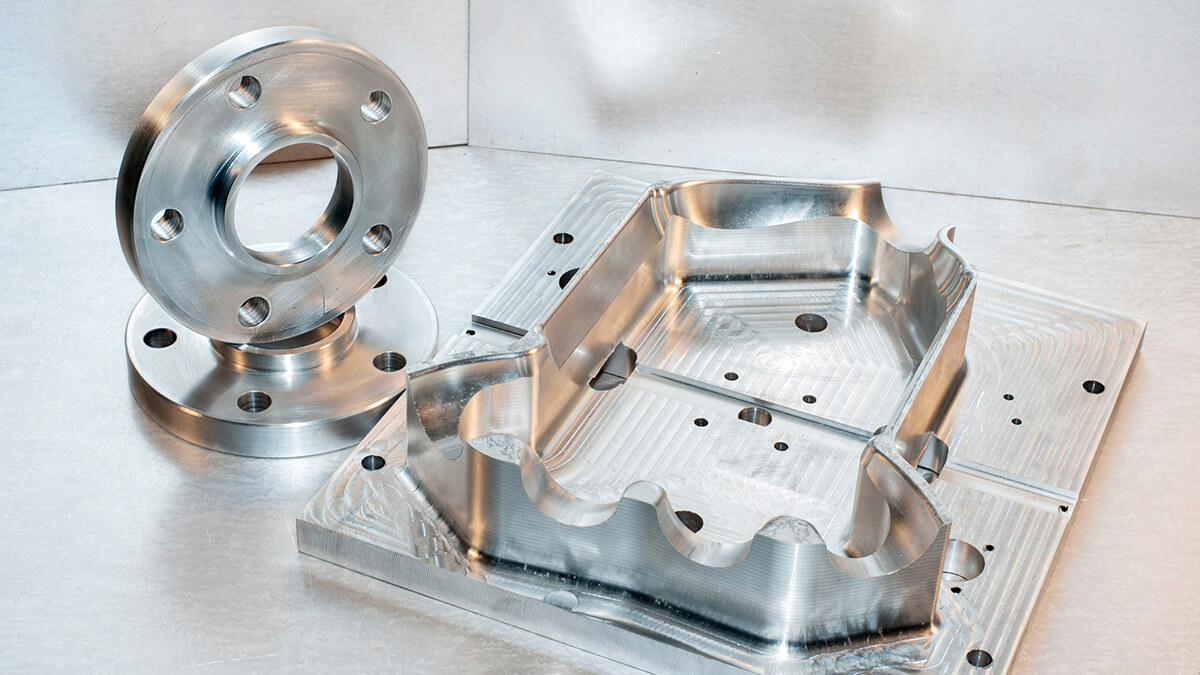Anodizing is a process of surface treatment. The final process of metal manufacturing is surface finishing, anodizing precision machined metal parts, a reliable and relatively inexpensive method to improve wear resistance and coloring aluminum and other non-ferrous metals.
Anodizing is a process of surface treatment
Anodizing is an electrochemical conversion process that usually forms an oxide film in an electrolyte (chemical solution) on aluminum. The aluminum part is the anode (hence the name "anodization"), and current passes through them and the above electrolyte (most commonly sulfuric acid is used) between the cathode and the cathode, which is usually a flat aluminum strip. There are different types of anodizing, the most common being type I-chromic acid anodizing, type II-sulfuric acid anodizing, and type III hard anodizing or Mil-A-8625 name Hardcoat. Other less common types are phosphoric acid and anodized titanium. Anodizing is a porous structure grown from an aluminum matrix and can absorb color dyes well. This is done by using a secondary operation of organic or inorganic coloring.
Other common types include chromic acid anodizing, boric acid anodizing (BSAA), sulfuric acid anodizing, hard anodizing (hard coating), titanium anodizing, electrolytic two-step anodizing-AnoBlack EC.
Anodizing precision-machined parts can provide a reliable and relatively inexpensive method to improve wear resistance and color aluminum and other non-ferrous metals. This electrochemical process was first developed in the 1920s. It revolutionized many industries, requiring lightweight, strong, and corrosion-resistant aluminum profiles for window frames, decorative facade panels, and many other architectural elements.
Today, it can protect satellites, skyscraper facades, and components in many industries, from aerospace to medical, and is one of the most effective ways to manufacture durable and almost maintenance-free aluminum components.
How to do it? Anodizing is a form of highly controlled oxidation. Essentially, oxidation corrodes ferrous metals. However, if applied correctly to non-ferrous metals, the effect is reversed. Aluminum is a common choice because of its lightweight and corrosion resistance, but for titanium, magnesium, zinc, and other metals that lack iron, there are indeed processes.
The common method of anodizing aluminum is to immerse the part in a sulfuric acid bath, which will form tiny holes (nanopores) in the aluminum surface. An electric current is applied to the medium, and by adding a cathode, oxygen ions are released from the acid and combined with aluminum. This forms an oxide layer, and the color can be applied at this time if necessary. Finally, a sealant is applied to close the nanopores and any micro-cracks in the oxide layer.
Unlike electroplating or paint that only covers the surface, anodizing is part of the metal, so it does not flake, flake, or flake over time. Just like the black oxidation conversion process of steel alloys, since the oxidation is derived from the metal, it will not flake or flake.
Benefit of anodizing
- Durability: As mentioned above, anodization changes the aluminum substrate at the molecular level. Anodized parts will not chip, flake or flake, and have extremely strong corrosion resistance and wear resistance. If sealed properly, wait at least five years in outdoor conditions.
- Low Cost: High value. The service life of anodized aluminum parts is longer than its sprayed or plated similar parts, and the manufacturing cost is lower.
- Safe for the Environment: Unlike spray coating and electroplating, anodizing does not produce hazardous waste or interfere with the recyclability of aluminum.
- Easy to Maintain: The parts look original from production and have remained in this condition for many years. Soap and water or mild detergents can remove dirt and restore the finish relatively easily.
- Aesthetics: The precision-processed parts are anodized to preserve the metallic luster of the parts, and the color is easy to repeat, which can be used in future production.
- Improve lubrication: For internal components, the porosity of the unsealed anodized surface can improve the adhesion and lubricity of the adhesive. However, this may expose them to contaminants, and unsealed or partially sealed parts require special attention and consideration.
Precautions of working process
- The positive factors are far greater than the negative factors, but anodizing is not a miraculous solution. Before choosing anodizing as the final application, the application and environment of each component must be carefully considered.
- Long-term exposure to ultraviolet (UV) light will cause the dye to fade over time. More resistant dyes can be used, but UV resistance will reduce the range of available colors.
- It is almost impossible to miss the make-up of anodized products. Although anodized surfaces are incredibly resistant to damage, they are not invincible. Even untrained eyes, paint modification is obvious.
- Compared with paint, color choices are limited. With all the advantages of anodizing, paint will always provide more color options in exchange for higher cost and lower durability.
- If you, unfortunately, hire an unqualified manufacturer, poor seals can cause corrosion of anodized parts.
- Temperatures above 176 ° F (80 ° C) will rupture the anodized aluminum, which has a lower thermal conductivity and linear expansion coefficient than uncoated aluminum.
- Anodizing can change the size of the components, with thickness ranging from .0002 inches to 0.002 inches (5 microns to 50 microns). This process increases the size of any surface by half the thickness of the oxide because the surface itself is half processed.







.png)






